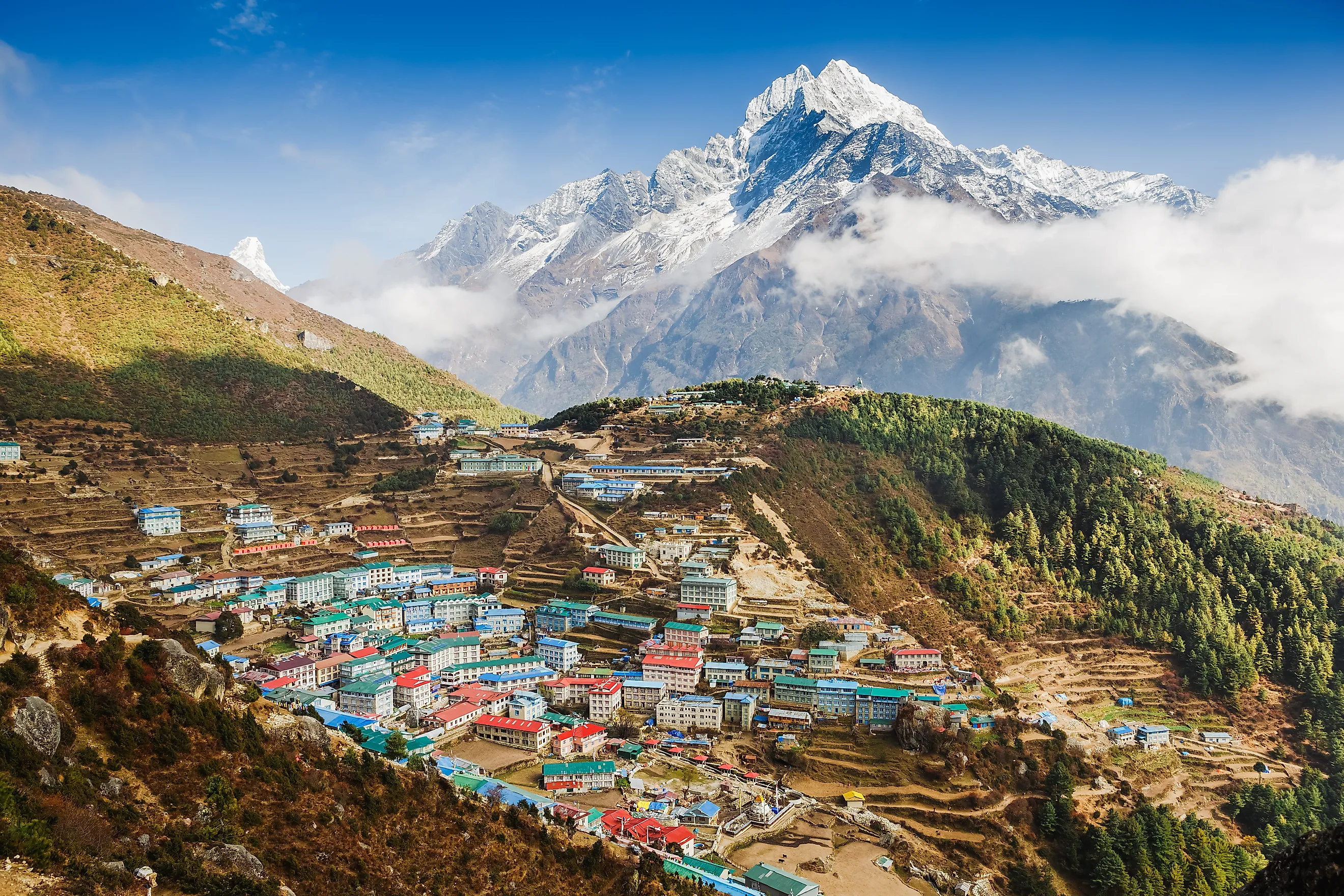
The World's 10 Most Mountainous Countries
Mountains effortlessly capture our gaze and beckon anyone with an adventurous spirit to strive toward the sky. Shrouded summits are where gods and demons roam, our ancestors sought a bird's-eye-view of unknown lands, and modern, boundary-pushing athletes hope for a blessed moment of triumph. Iconic peaks help mark the map, and rolling hills offer seclusion and protection from the modern world and political or hostile intrusions. If you are a mountain-lover, these ten countries, ranked by the percentage of area covered by mountains, are the place for you.
- Bhutan - 98.8%
- Tajikistan - 91.9%
- Kyrgyzstan - 90.7%
- Lesotho - 90.5%
- Montenegro - 89.3%
- Armenia - 85.9%
- North Macedonia - 85.5%
- Switzerland - 83.6%
- Lebanon - 81.1%
- Nepal - 80.7%
1. Bhutan - 98.8%
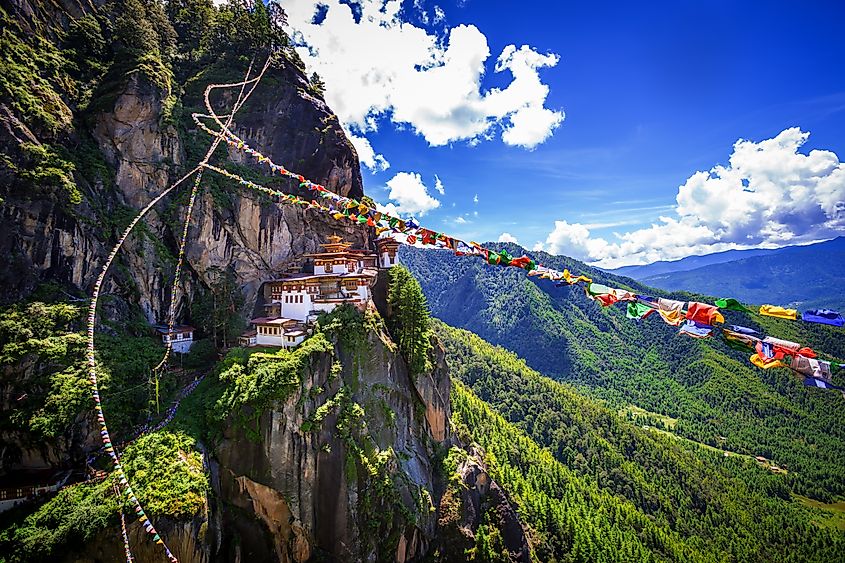
The mysterious and once-isolated Buddhist country of Bhutan (Kingdom of Bhutan) occupies a landlocked region in South Asia. Its humble borders are almost entirely covered by the mountains of the Himalayas. With an average elevation of 10,760 feet (3,280 meters) above sea level, Bhutan is not only the most mountainous nation in the world in terms of total coverage but also by overall height. The most prominent point in the land is the 24,836 ft (7,570 m) summit of Gangkhar Puensum, which just so happens to be the highest unclimbed peak in the world. Nature enthusiasts will rejoice even further, knowing that forests also shroud about 70% of Bhutan's surface area. This unspoiled landscape and focused efforts around sustainable practices led to Bhutan being recognized as the world's first carbon-negative country. Visitors must pay a $200 (USD) per day Sustainable Development Fee to preserve the nation's ecological and spiritual priorities.
2. Tajikistan - 91.9%
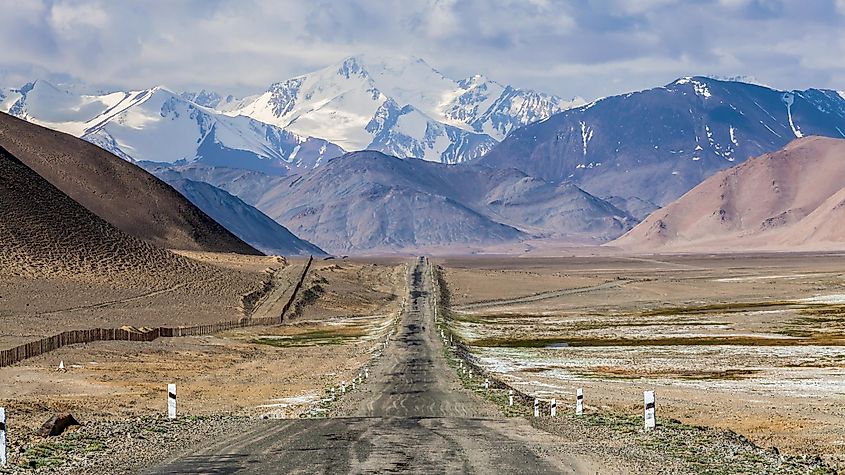
The Republic of Tajikistan is a landlocked nation in Central Asia. The Tien Shan system (which includes the Trans-Alay (Zaalay), Zeravshan, and Gissar ranges, as well as the Turkestan Mountains and Pamir mountain systems), encompass the vast majority of Tajikistan's footprint. The average height above sea level comes at a considerable 10,455 feet (3,186.69 m), which ranks it third in the world by that metric. The nation's highest peak is Imeni Ismail Samani, which tops out at a rarefied 24,590 ft (7,495 m).
3. Kyrgyzstan - 90.7%
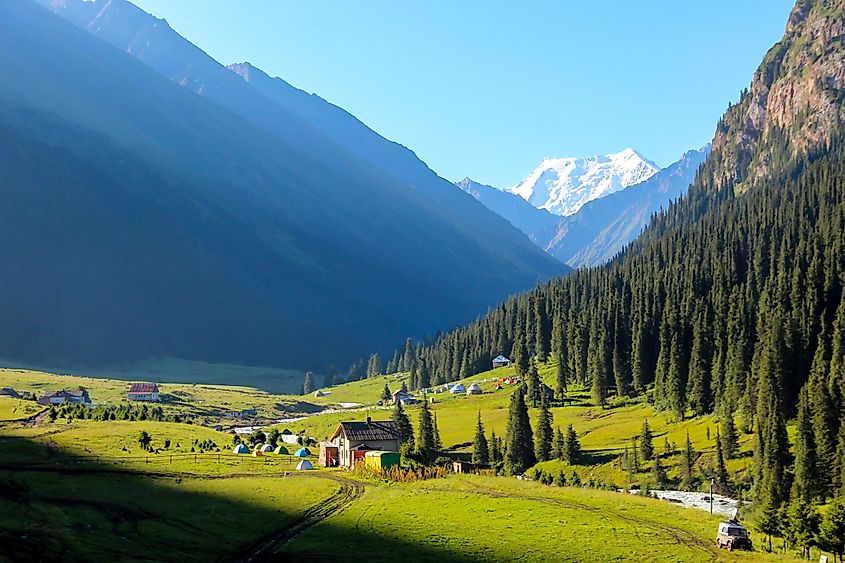
Kyrgyzstan lies North of Tajikistan, also in Central Asia, and is graced by the Tien Shan great mountain system. The country's highest mountain (and the highest within the Tien Shan), Jengish Chokusu, also known as Victory Peak and/or Pobedy Peak, stands in the northeastern corner of the country, at a snow-capped altitude of 24,406 ft (7,439 m). At the Southern border, the Kok Shaal-Tau, Alay, Trans-Alay (Zaalay), and Atbashi ranges all loom large. Kyrgyzstan's average height above sea level is 9,805 ft (2,989 m).
4. Lesotho - 90.5%
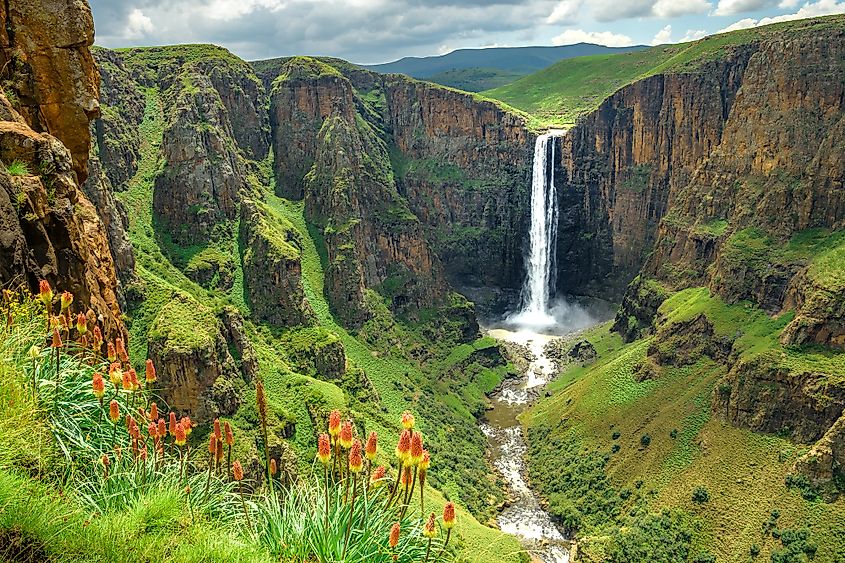
The Kingdom of Lesotho (Basutoland) is a tiny African nation encircled by the Republic of South Africa. Here, the natural isolation and geological fortresses that the mountains form have helped Lesotho maintain its political independence. The highest peak, Mount Ntlenyana (11,424 ft/3,482 m), is part of the Drakensberg range, which marks the country's Eastern boundary. The Maloti Mountains run north-south and meet with a pronounced plateau ranging between 9,000 to 10,500 ft (2,743 m). Lethoso relies on this area for viable farmland. The nation's average elevation is 7,090 ft (2,161 m) above sea level.
5. Montenegro - 89.3%
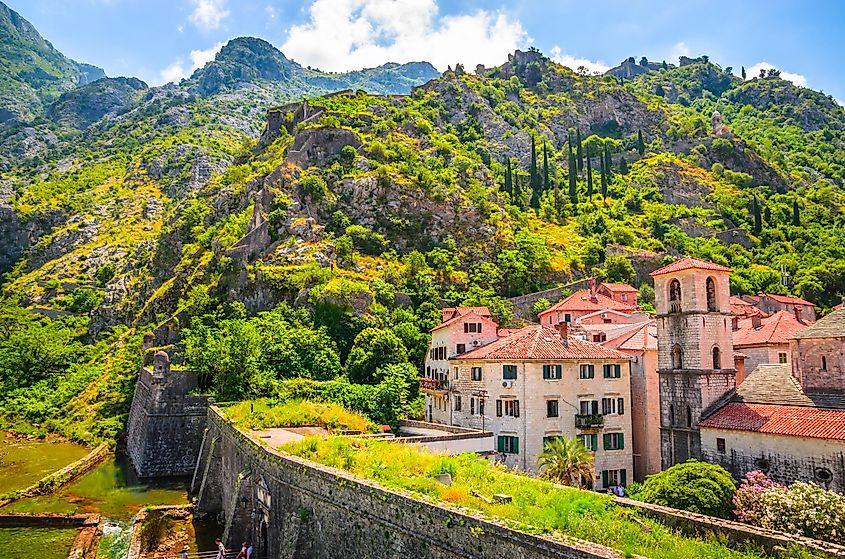
While the first image of this Balkan Nation to spring to mind may be the idyllic Adriatic Sea coastline, Montenegro, which means "Black Mountain," is perhaps best described as a beautifully rugged, glacier-battered landscape. The Dinaric Alps (i.e., the Southeastern branch of the Eastern Alps) grind their way across the Northeastern portion of Montenegro, while the Durmitor Mountains cut through the Central region, which includes the scenic Durmitor National Park. "Black Mountain" specifically references Mount Lovćen (5,738 ft/1,749 m), while the highest point in the nation goes to Bobotov Peak (8,274 ft/2,522 m).
6. Armenia - 85.9%
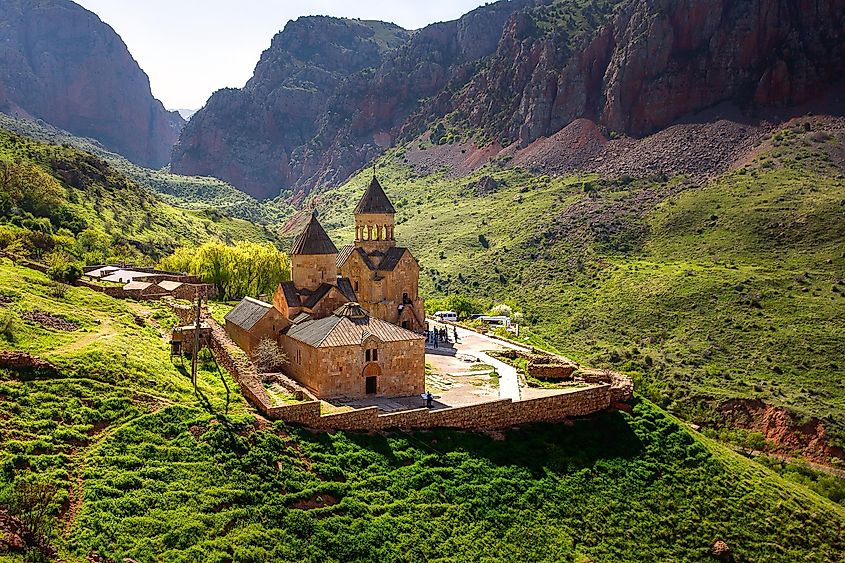
The Republic of Armenia is one of three countries (along with Georgia and Azerbaijan) that comprise the Transcaucasia region. Here, the grand Caucasus Mountains (of which the nearby Mount Elbrus - Europe's highest peak - is part of) transition into the Lesser Caucasus ranges that roll along the Northern and Eastern parts of the country. Armenia's high point can be found at the 13,418 ft (4,090 m) summit of Mount Aragats (Alaghez), in the Armenian Highland, in the Northwest. The average elevation across the entire landlocked country is 5,879 ft (1,792 m) above sea level.
7. North Macedonia - 85.5%
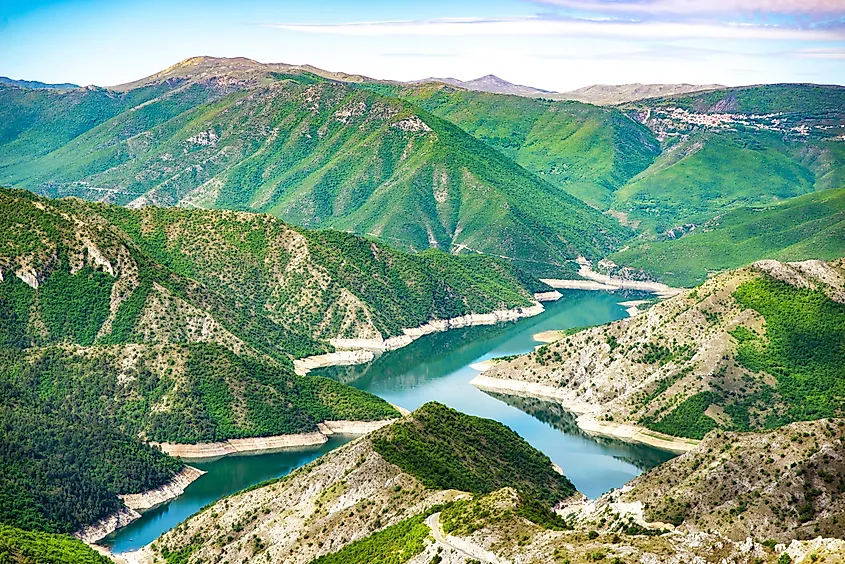
The Republic of North Macedonia is a small nation in the South-Central Balkans that blends in some Mediterranean splendor. The stalwart Šar Mountains draw the Western border and also spill into Southern Kosovo, while the capricious Pirin Mountains (named after the Slavic thunder god, Perun) occupy North Macedonia's Eastern region. Mount Korab, on the Albanian border (to the West), tops out at a solid 9,030 feet (2,752 meters), and many of the other pervasive peaks poke about the tree line of 6,600 ft (2,000 m).
8. Switzerland - 83.6%
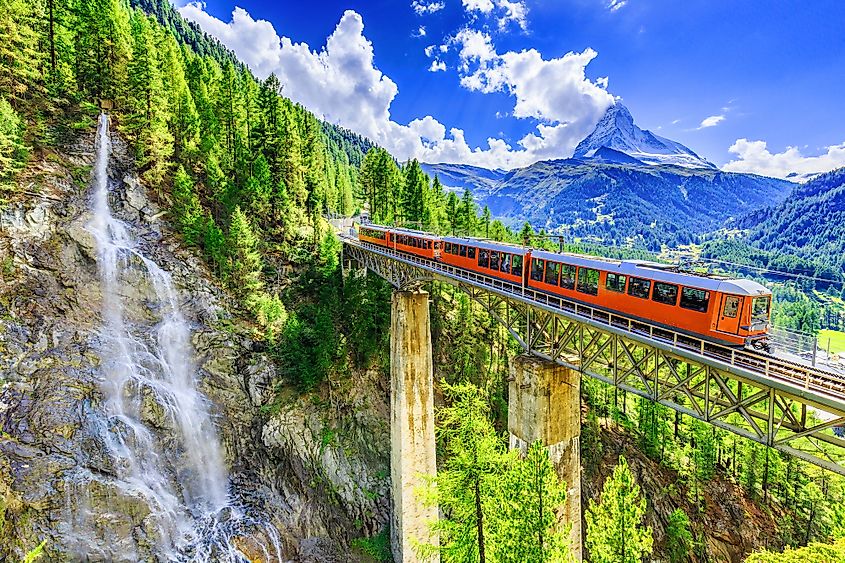
The classic Swiss Alps have challenged the world's best climbers for centuries and continue to delight all who are lucky enough to lay eyes on the many famous peaks. The bold triangular face of the Matterhorn stands to watch over the village of Zermatt, still beckoning sure-footed adventurers to test their skill (and their luck). The infamous North face of the Eiger emanates its startling yet spectacular history to the people of Grindelwald. And the more welcoming Jungfrau invites folks of a more leisure-based persuasion to ride the rails towards her summit, enjoying stunning views of the Bernese Alps without the dangers of technical mountaineering. No matter where one roams in this tiny European nation, striking peaks will likely dominate the horizon.
9. Lebanon - 81.1%
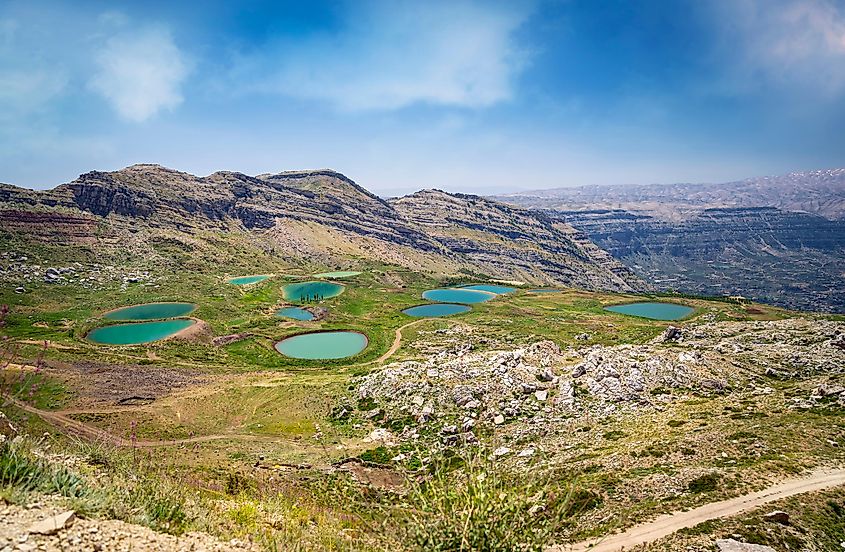
The Middle-Eastern nation of Lebanon (officially, the Republic of Lebanon) is sandwiched and environmentally juxtaposed, between the expansive Mediterranean Sea, to the West, and the centralized, snow-capped Lebanon Mountains, which run nearly the entire length of the country. Further East, for much of the length of the Lebanon/Syrian border, stretches the Anti-Lebanon Mountains. Qurnat al-Sawdāʾ, part of the Lebanon Mountain range, is the highest peak around, just eclipsing a key imperial and metric barrier (10,131 ft/3,088 m).
10. Nepal - 80.7%
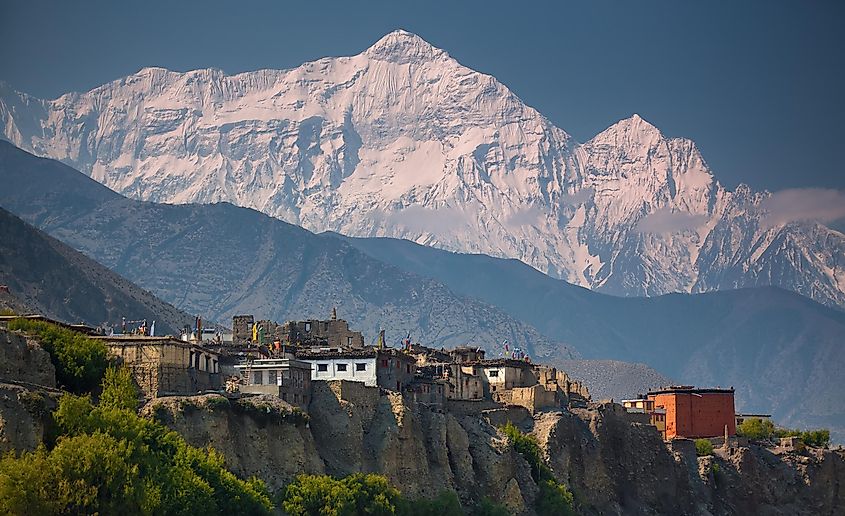
The South Asian nation of Nepal is synonymous with the epic Himalayan mountains (or at least the celebrated Southern slopes). The Great Himalaya Range, in particular, is home to many of the legendary "8,000ers" (i.e., peaks over 8,000 m, or 26,400 ft), including Kānchenjunga I, Lhotse I, Makālu I, Cho Oyu, Dhaulāgiri I, Manāslu I, and Annapūrna I — and last but the antithesis of least, Mount Everest. The highest mountain in the world (29,035 ft, 8,850 m) was first climbed via the now classic, Southern route offered by Nepal and continues to be the go-to attempt for adventurers with big dreams (and big wallets). Though Nepal is the tenth most mountainous country in the world in terms of percentage cover, it is second only to Bhutan in terms of its average elevation (10,715 ft/3,266 m).
These ten countries have formed in conjunction with spectacularly mountainous landscapes. The plateaus and peaks offer captivating views, act as natural barriers, inspire the culture, and lure visitors from far away. If your soul yearns for the mountains, these are the places to seek.











